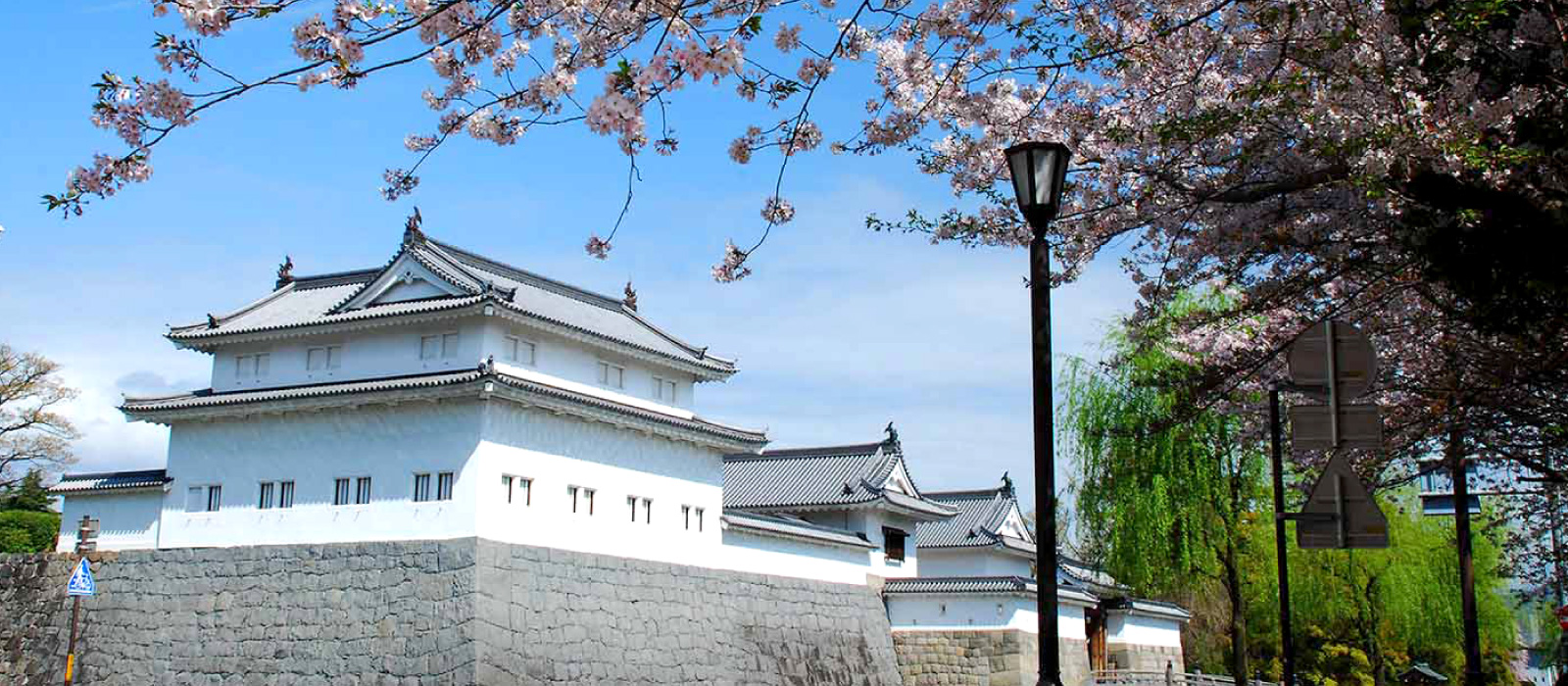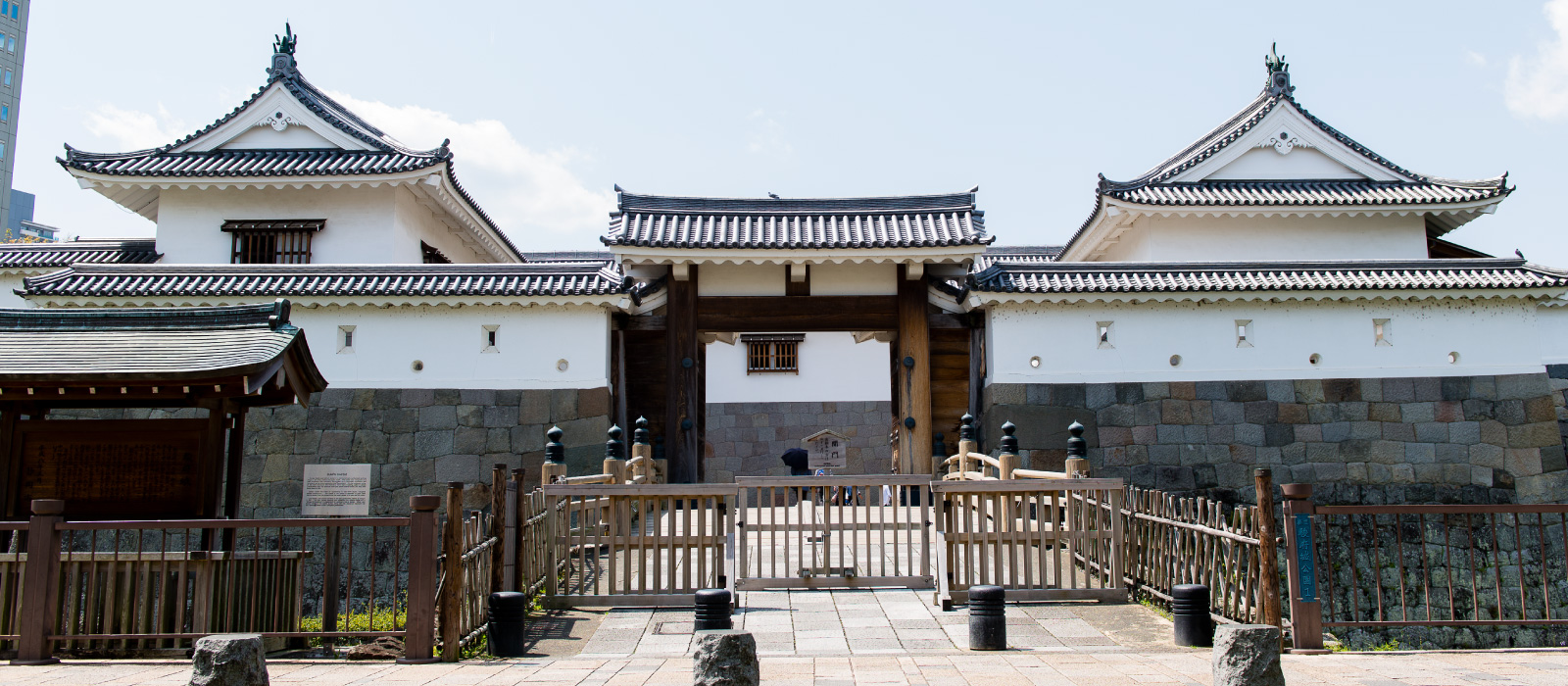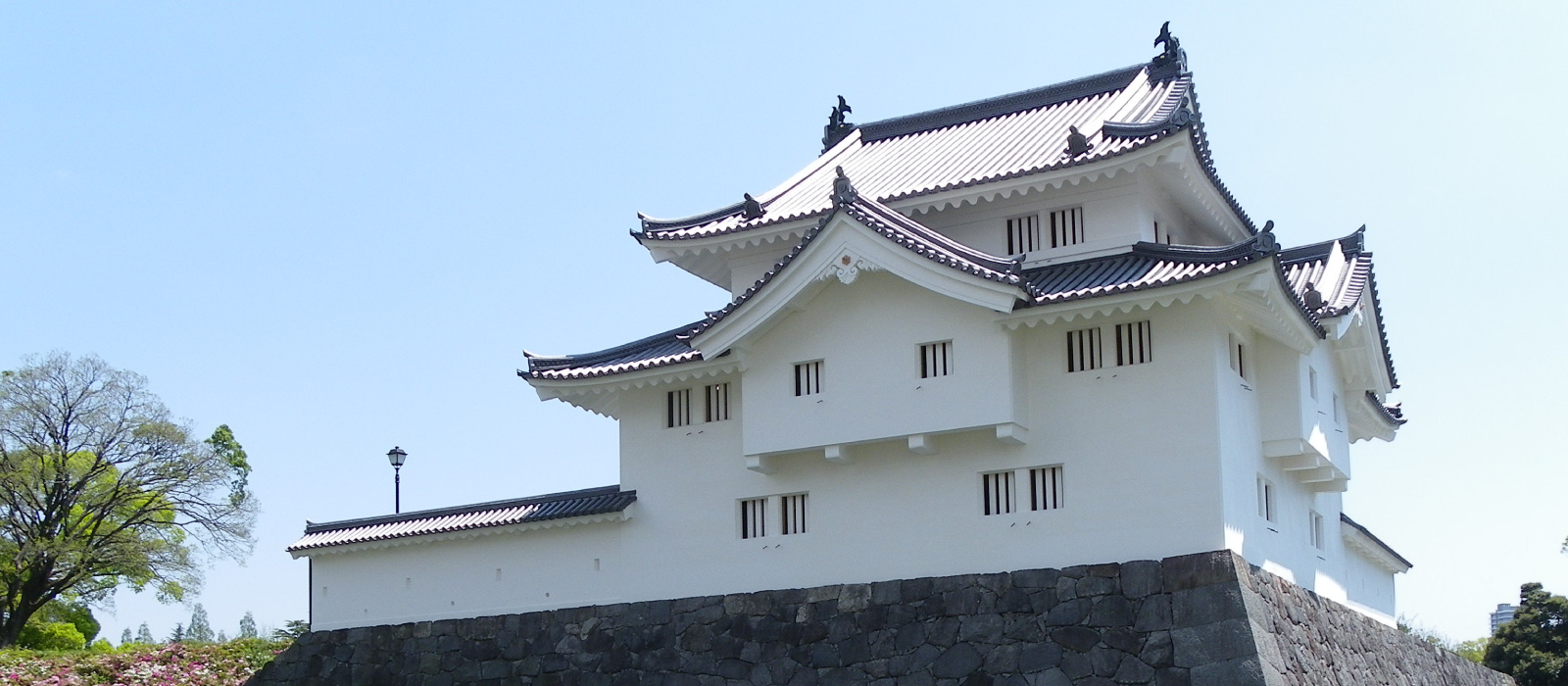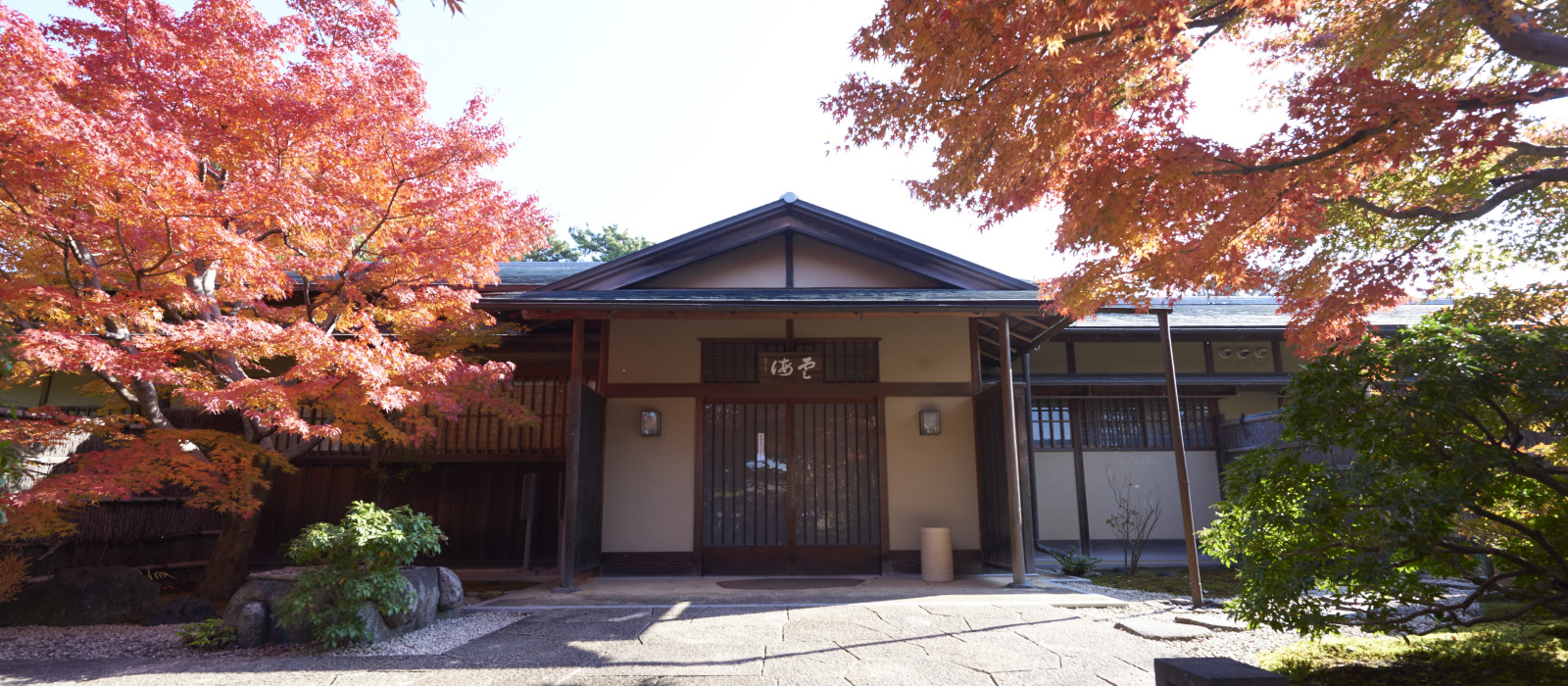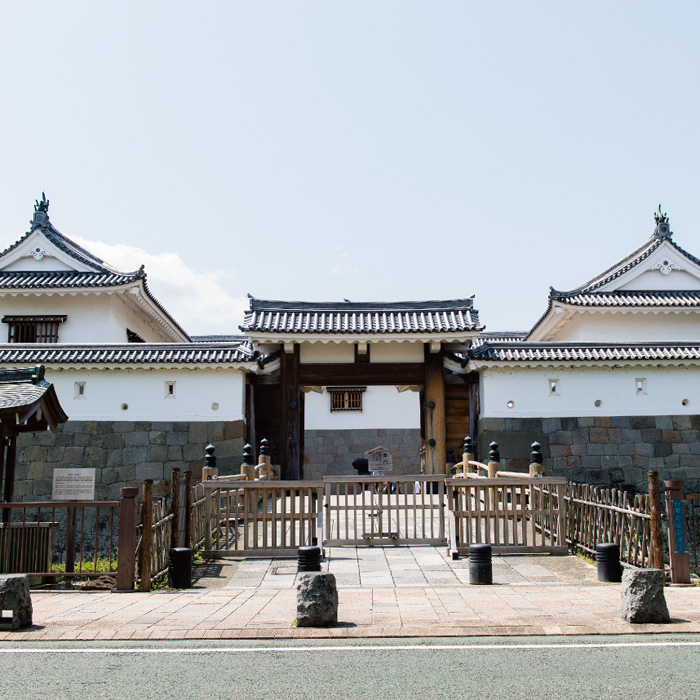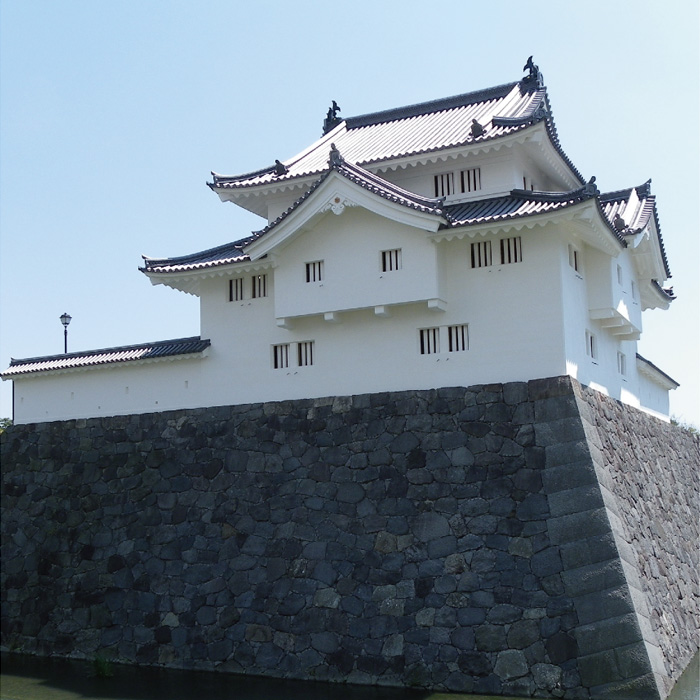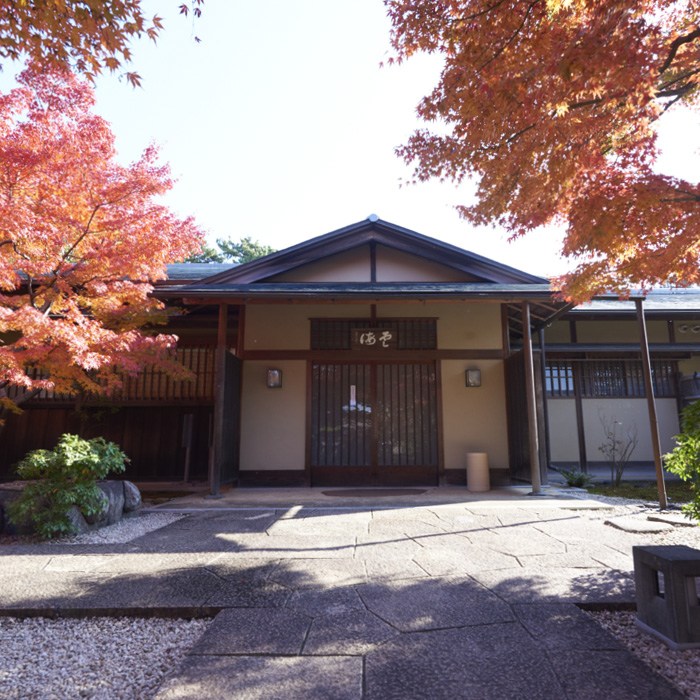

HISTORY
Tokugawa Ieyasu (originally named Takechiyo Matsudaira) was a hostage of the Imagawa clan in his youth. He spent his young years, middle age, and the end of his life in Sumpu (now Shizuoka City).
Ieyasu, who united Japan, retired to Sumpu after his son Hidetada became shogun.
Construction of Sumpu Castle began in 1607 (Keicho 12) by orders of the daimyo (feudal lord), with three concentric moats protected by stone walls (from inside to outside: Honmaru, Ninomaru, Sannomaru). On the north-west side of Honmaru, a seven-story donjon with a five-level roof was constructed.
In its golden age, Sumpu outshone Edo (Tokyo) politically, economically, and culturally.
After the death of Ieyasu, the donjon was almost completely destroyed in a fire in 1635 (Kanei 12). While the turret and gate were rebuilt, the tower was not.
Sumpu Castle in the Edo era gradually declined in scale after that.
In the Meiji era, the Honmaru moat was filled in for use by the 34th Infantry Regiment, and Sannomaru was used as a public space for government officers and schools.
After the war, Honmaru and Ninomaru was turned into a park for citizens' rest and relaxation.
Famous for its hundreds of cherry trees which bloom in spring, it also has vivid azaleas which bloom in May.
Higashi Gomon, Hitsujisaru Yagura, and Tatsumi Yagura have been remodeled using traditional woodworking techniques. Inside, you can see pictures and materials about the reconstruction as well as excavated materials.

VIEW
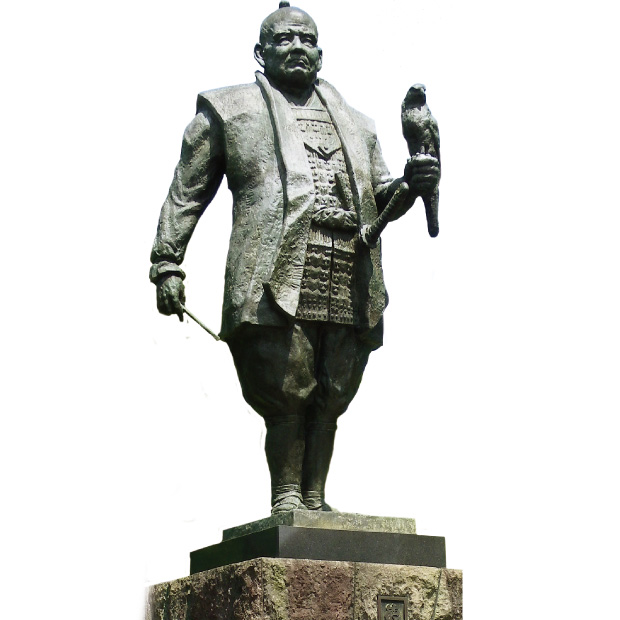
5Tokugawa Ieyasu Statue
A bronze statue of Ieyasu as a retired shogun. In front of Shizuoka Station there are statues of Takechiyo Matsudaira (his original name) and Ieyasu in his prime.
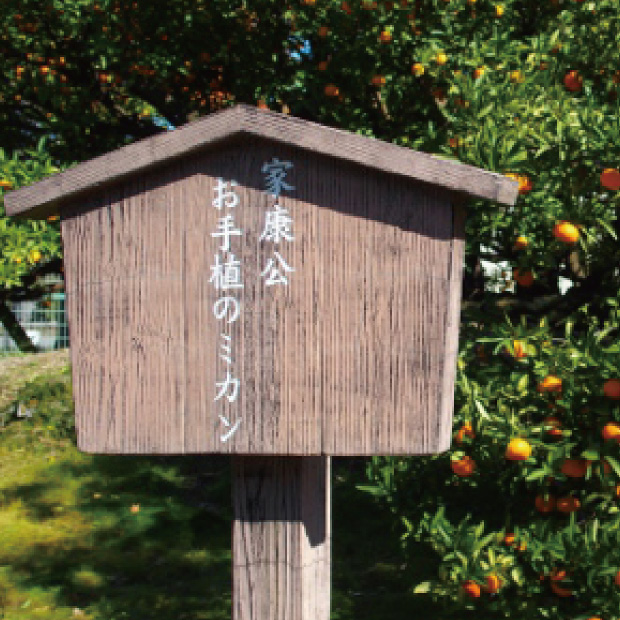
6Mandarin Orange Tree Planted by Ieyasu
A type of mikan (mandarin orange) called the cherry orange (kishumikan, komikan, or honmikan) was introduced to Japan from China in the Kamakura era. This orange was the origin of the Shizuoka area mikan and has been declared a Prefectural Natural Monument due to its importance.
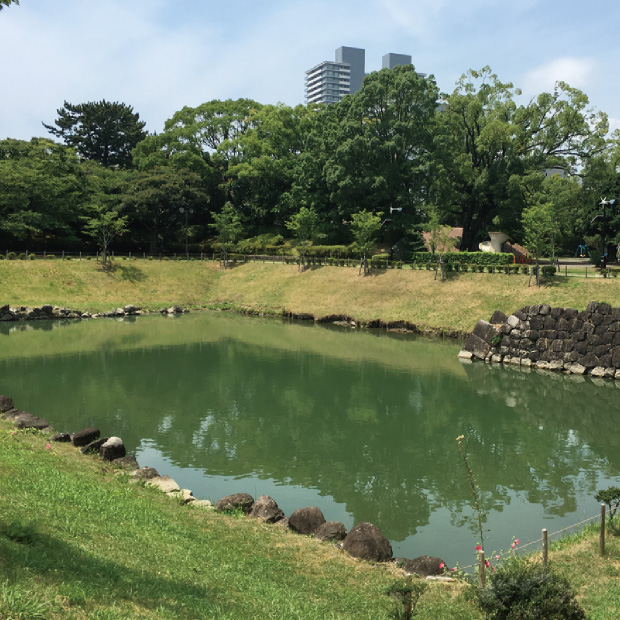
7Honmaru moat (Inner moat)
This is the innermost moat of Sumpu Castle. It was covered over in 1896, but the southeast area and canal environs have been excavated and reproduced in the present-day.
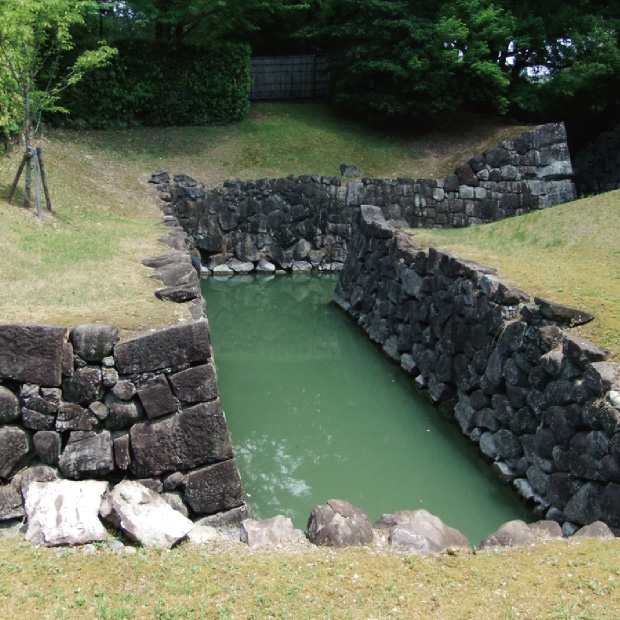
8Ninomaru water canal
Connects the Honmaru (inner moat) and Ninomaru (center moat). Lined with stones, it sports a unique construction. It also helps maintain the water level of the Honmaru moat.
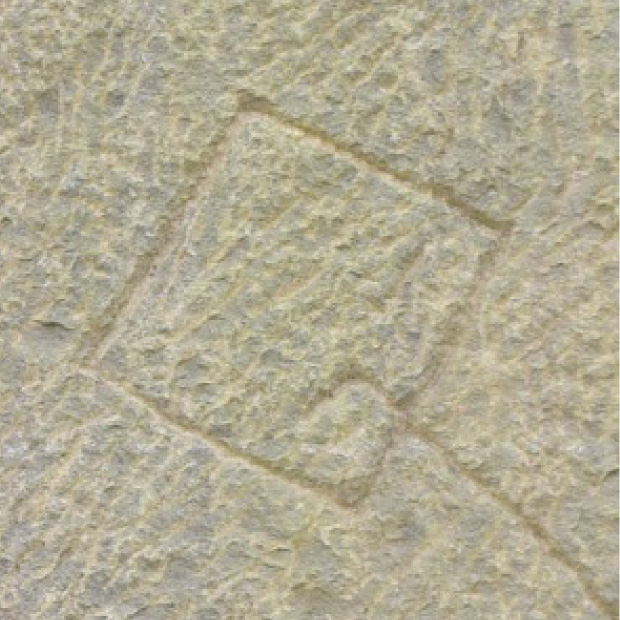
9Engraved stones
Sumpu Castle has a particularly large number of rocks in the walls bearring the daimyo's mark of ownership. How many can you find?
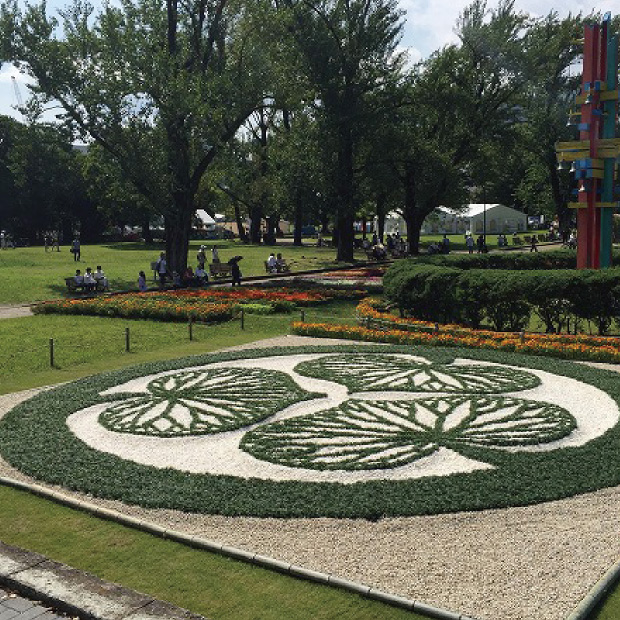
10Hollyhock Crest Flower Bed
To mark the 400th anniversary of Ieyasu's death, this flower bed in the shape of his crest, the hollyhock (aoi), was created in 2015 using tamaryu (lilyturf) and white and brown gravel.
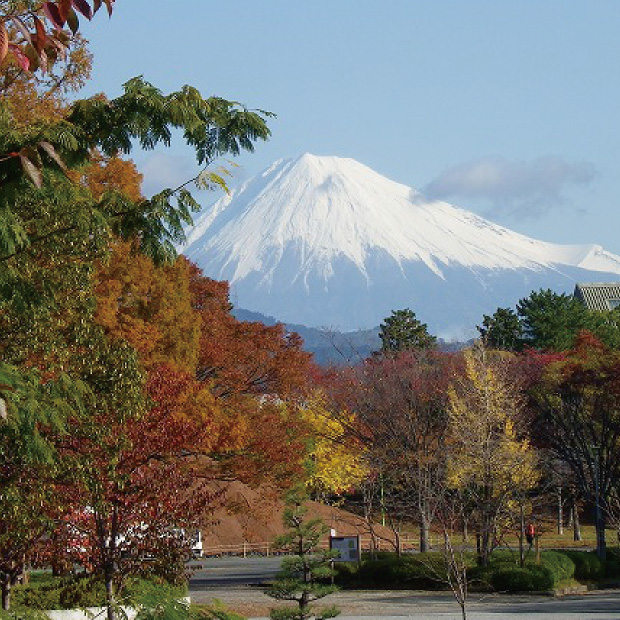
11Fujimi Play Area
This is a great place to see the magnificent Mt. Fuji on clear days.
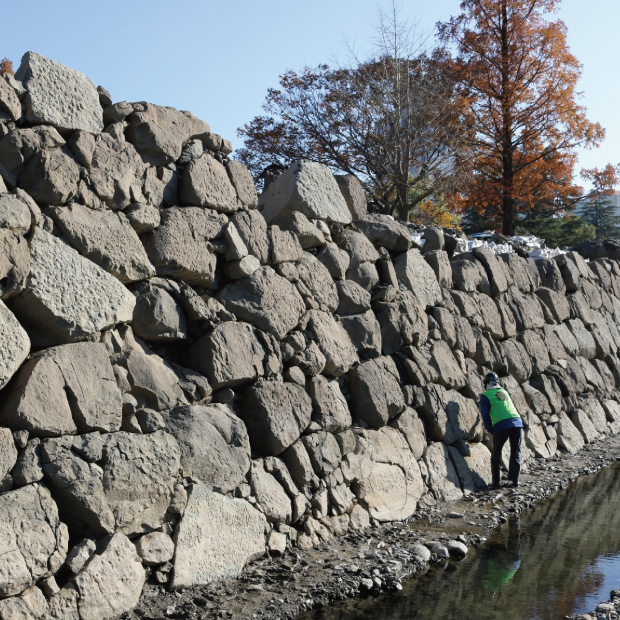
12Sumpu Castle Tower Base Excavation Site
Come and see the Sumpu Castle Tower Base Excavation Site, the site of what was the largest tower in Japan! You can view the impressive donjon and monitor the progress being made every day.
A Portal for Leaders, The Pinnacle of Battle
Higashi Gomon / Tatsumi Yagura
Higashi Gomon is the location of the Masugata Gate, located on the east side of Ninomaru.
The restoration of this area was completed in 1996 using traditional Japanese carpentry techniques. It was a strategic gate with gun slits where defenders could drop stones on attackers, and archers could fire on attackers in a narrow space.
The double-layered, three-story Sumi Yagura, one area of the Tatsumi Yagura, was restored in 1989. It has a unique L-shaped layout which is very rare in Japan. It was crucial to the defense of Sumpu Castle.
Inside, you can see materials excavated in Sumpu Castle Park and a recreation of the schoolroom, the Takechiyo Tenarai-no-ma in Rinzai-ji Temple, where young Ieyasu received lessons.




Sumpu Castle Ninomaru
Hitsujisaru Yagura
The Hitsujisaru Yagura is in the southwest corner of Ninomaru.
In the Edo era, the Chinese zodiac was used to indicate compass points, so the name "Hitsujisaru" was used to indicate "south-west."
In 1854(Ansei 1), it was destroyed in the Great Ansei Earthquakes, and was reconstructed 160 years later using traditional woodworking techniques.
You can view the dual-roofed, three-story construction from the inside. It is divided into five rooms: Jiku, Tehodoki, Mitwatashi, Kioku, and Hengen.
In the Jiku Room, you can experience Sumpu Castle's donjon and the surrounding town in 3D with the Konjaku Virtual Reality Experience utilizing the latest technology.



A garden where you can enjoy the colorful four seasons of Sumpu
Momijiyama Garden
Momijiyama Garden in Sumpu Castle Park is a place to relax while enjoying the historic atmosphere, and where you can get a good look at the exterior of the castle.
One of the four most beautiful gardens in Suruga, it has beautiful cherry blossoms in spring, hydrangeas in summer, colorful leaves in autumn, and camellias in winter. Enjoy the four seasons and soak up the atmosphere in this well-designed garden.
Have some delicious tea at the Momiji-tei (not included in castle entrance fee).
Come and delight in the beauty of Suruga.




VISIT
| Hours | 9:30 am - 4:30 pm *Last entry 4:00 pm |
|---|---|
| Closed | Mondays (Open on national holidays) Year-end/New Year's holidays (12/29-1/3) |
|
|
ACCESS
| By Train |
|
|---|---|
| By Bus |
We recommend using the Koshizu Sumpu Roman Community Bus.
|
